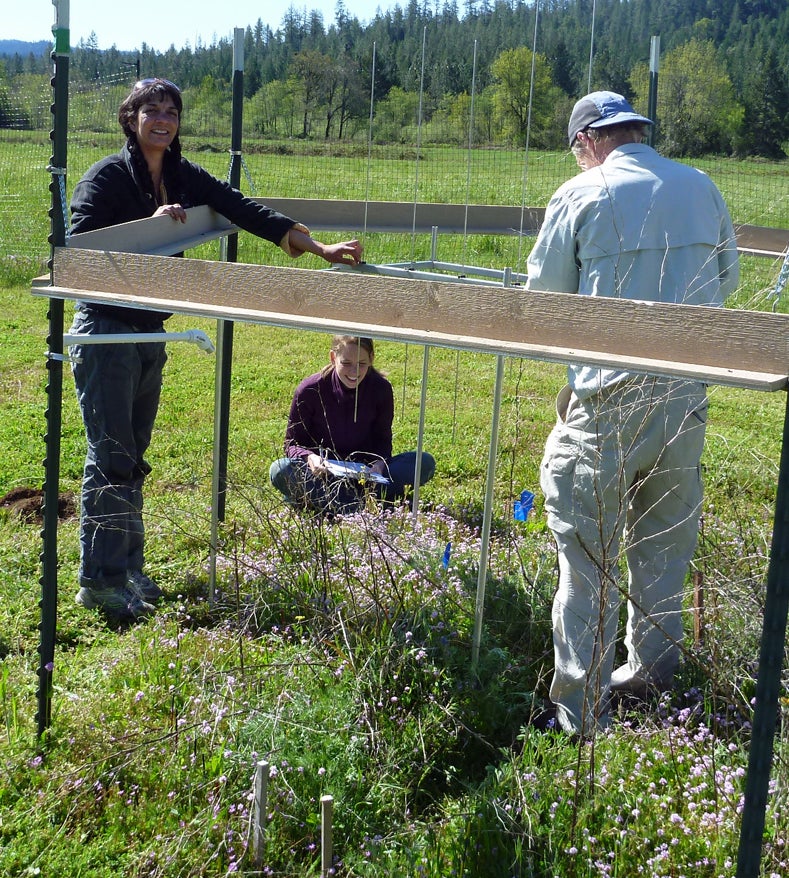Growing conditions at three sites in the Pacific Northwest are being manipulated by UO scientists to test how 12 species of native grasses and forbs, as well as invasive plant species, will adapt, change or potentially go extinct under climate conditions projected by the end of the century.
The sites – one in southern Oregon, one in Eugene and one near Olympia, Washington – are being subjected to wetter winters and longer, hotter summers, says project leader Scott D. Bridgham, professor of biology, director of the Environmental Science Institute and member of the Institute for Ecology and Evolution.
 Under a new $2.3 million grant from the National Science Foundation, infrared lamps generate warmer temperatures and dry the soils, and an irrigation system, which recycles captured rainfall, increases precipitation by 20 percent. "We are making the Washington prairie site more like what projections are for the end of the century, which are more like southern Oregon is now," Bridgham said. "By then, southern Oregon will be more like much of California."
Under a new $2.3 million grant from the National Science Foundation, infrared lamps generate warmer temperatures and dry the soils, and an irrigation system, which recycles captured rainfall, increases precipitation by 20 percent. "We are making the Washington prairie site more like what projections are for the end of the century, which are more like southern Oregon is now," Bridgham said. "By then, southern Oregon will be more like much of California."
Read the full news release for more details.
—By Jim Barlow, Public Affairs Communications

